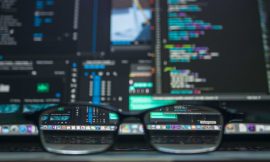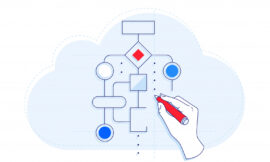Johns Hopkins’ interactive data-driven maps have been the catalyst for a resurgence in online community platforms throughout the country.
You don’t have to be obsessive compulsive to check daily on the best, first, and easily accessed research data on the coronavirus: the John Hopkins University Research Center’s (JHURC) maps and dashboards. The information visitors gather can be either alarming or comforting to those helping to achieve the goal of flattening the curve.
And however the site’s visitors feel, they can turn towards peers in community platforms, which have recently garnered renewed interest, undoubtedly due to the pandemic and sheltering at home.
SEE: Coronavirus: Critical IT policies and tools every business needs (TechRepublic)
Online community platforms: Popular once again
“In our current environment, global online community platforms have become more vital than ever,” said Usha Iyer, chief product officer at Hivebrite, which powers the JHURC’s online community, as well as at the Center for Disease Control (CDC), Notre Dame, Oxford, and McGill, and those schools’ alumni communities’ platforms. Hivebrite is currently offering their donation module free and just introduced a virtual meeting feature.
Iyer added, “Online communities provide a platform for users to get support, share best practices, collaborate, and build relationships, without a compromise in safety and experience, from any place and any time.”
Another platform, Wisdo, has also seen a rise in traffic. “Since March 1st, when the coronavirus hit hard, we’ve seen an enormous uptick in engagement, reflecting people’s urgent need for deeper, more meaningful online connections that don’t necessarily happen on traditional conversation networks. All in all, we’ve seen average daily sessions per user rising from a high of three a day on average pre-corona, to a remarkable seven a day on average now,” said Boaz Gaon, CEO of Wisdo.
And forums on the cite are surging, Gaon said, offering these stats:
-
25% increase in people reporting having to “cope with depression”
-
350% increase in people reporting having to deal with “pandemic anxiety”
-
46% increase in people reporting having to deal with “loneliness”
-
46% increase in people reporting having to deal with “developing sleep problems”
These figures, Gaon said, “suggest an increase in people looking for deeper, more meaningful connections online, which might explain the tremendous uptick in engagement; 10% of all Wisdo users since March 1st have chosen the following as their number one goal in life: ‘Making new friends while depressed.'”
Since the pandemic, Civic Dinners, a community engagement platform that fosters connection through food and real conversation pivoted to virtual dinners, have “found that many clients and individuals love the virtual conversations,” said Jenn Graham, CEO and founder of Civic Dinners, whose clients include Facebook and nonprofits like Welcoming America.
“We’ve observed a significant increase in engagement over the past few weeks as top executives discuss similar challenges and even engage in watercooler conversation to add some normalcy to their new remote-work lives,” said Mayank Mehta, co-founder and CEO of Pulse, an online community for CIO and IT executives.
The Pulse community’s IT leaders (28%) “now rely on peer recommendations to make purchasing decisions, and 18% use online communities to do so,” Mehta said.
“Part of the reason,” for the uptick in use of online community platforms, “obviously is the physical confinement, and roughly 50% of Wisdo’s traffic since March 1st has come from London or New York, two of the world’s major hot spots,” Gaon said. “The shutting down of colleges and sending millions of college students home, has driven them to online communities to replace their existing offline social networks. It also served as a digital escape and lifesaver from their pre-college physical surroundings which include parents, siblings,” friends, and colleagues.
Iyer said, “As they make their shift to online efforts, people are finding it hard to create a complete virtual brand experience using their existing digital tools such as websites, email marketing, blogs, and social handles. A community platform such as Hivebrite not only enables a holistic brand experience but also enables these communities to run virtual events, host discussions, facilitate networking, and more.”
While the JHURC’s COVID-19 tracking map displays a world map on the site, it is US-oriented, and a timely and relevant public-health tool. Data for the map is gathered from existing university efforts to track the global coronavirus outbreak, and it offers access to US county-level data on testing, population, infection rate, and hospital capacity. It’s still a global research and has tracked confirmed cases of COVID-19 and related data since January 22, while fostering an online community frightened by what’s ahead.
The popular dashboard was created from an idea by JHU professor Lauren Gardner of JHU’s Center for Systems Science and Engineering. Gardner collaborated with one of her graduate students, Ensheng Dong, who built the site.
Once launched, the site soon became an internationally trusted resource to better understand the evolving epidemic in near-real time, an official blog on JHU’s website reported.
The most recent update to the site adds US testing and hospitalization rates on a state level, incidence and mortality rates on a global level, and US state case curves and the online community continues the discussion.
The US-focused map overlays key demographics and socioeconomic indicators over the epidemiological data and includes, per JHU’s website:
-
Maps that allow users to see the density of the outbreak and its effect on counties
-
The type of stay-at-home policy that is in effect and when it was put into place
-
County-level confirmed cases and deaths compared to the state levels of each
-
State-level testing data
-
County-level race and ethnicity data and poverty rates
-
Health insurance rates by age group by county
-
The number of residents per county in the highest risk age category (older than 65)
-
Hospital capacity data, including baselines of licensed beds, staffed beds, and ICU beds
And the included research–while currently invaluable as it continuously updates–is designed to benefit future research as it monitors the economic impact of the pandemic, from data enhancements, insurance information, poverty rates, and demographic information.
The clarity and accessibility of the JHU map and dashboard has set the gold standard for other agencies and organizations who have developed tracking maps and searchable data.
Other maps/dashboards reflecting COVID-19’s impact currently available online and reported on by TechRepublic include:
In addition to building the site from the university’s reporting from the very earliest days of the pandemic, it uses external research and visualization efforts by media organizations including CNN, The New York Times, The Guardian, and Associated Press (AP).
The map/dashboard use data source from: WHO, CDC, ECDC, NHC, DXY, 1point3acres, Worldometers.info, BNO, the COVID Tracking Project (testing and hospitalizations), state and national government health departments, and local media reports. A downloadable database is available at GitHub.
Since you’re probably working/sheltering at home, you’re unlikely to frequently use the mobile version of the site, but if you find you carry your phone around your house as a habit, or check news as you walk your dog, it’s very handy.
“I do think what’s interesting is tracking the type of online communities people are looking for,” Gaon said. “The longer the lock down, my bet is that we will see platforms that offer genuine advice and support rising in traffic and engagement on the expense of platforms that offer just online connections, mainly due to the unfortunate and urgent need of hundreds of millions looking to find social support, hope and guidance in a world in which the road to success and happiness is no longer paved, nor clear.”
Also see

Image: Getty Images/iStockphoto
Source of Article




